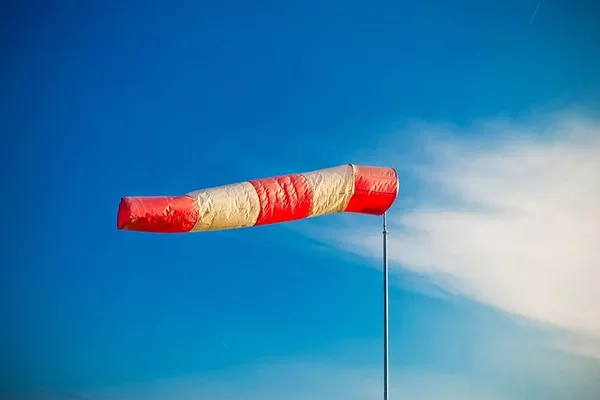Anemometers are essential instruments in meteorology and various industrial applications for measuring wind speed. Understanding how to measure the speed of an anemometer is crucial for accurate data collection, which can impact weather forecasting, research, and operational safety in fields such as aviation and renewable energy. This article delves into the principles, methodologies, and practical considerations involved in measuring the speed of an anemometer.
Principles of Anemometry
Anemometers come in several types, each operating on different principles to measure wind speed:
Cup Anemometers: These are the most common type, consisting of three or four cups attached to horizontal arms. The wind causes the cups to rotate, and the speed of rotation correlates with wind speed.
Vane Anemometers: These have a propeller or turbine that spins in response to wind. The rotation speed is measured to determine wind velocity.
Hot-Wire Anemometers: These measure wind speed based on the cooling effect of air flowing past a heated wire. The rate of cooling is used to calculate wind speed.
Ultrasonic Anemometers: These use ultrasonic sound waves to measure the time it takes for sound to travel between transducers. Wind speed affects this travel time, allowing for accurate measurement.
Laser Doppler Anemometers: These measure the Doppler shift in a laser beam caused by particles moving with the wind, providing precise wind speed data.
Calibration and Measurement Techniques
Accurate measurement of an anemometer’s speed requires proper calibration and understanding of the device’s response to wind flow. Here are the key steps and considerations:
Calibration
Calibration ensures that the anemometer provides accurate readings. This process typically involves comparing the anemometer’s readings against a standard reference in a controlled environment:
Wind Tunnel Calibration: Anemometers are tested in wind tunnels where controlled wind speeds can be generated. The anemometer’s readings are compared with the known wind speeds to determine accuracy.
Field Calibration: Involves placing the anemometer alongside a reference anemometer in a natural setting. This method ensures the device performs well in real-world conditions.
Manufacturer Calibration: Some anemometers come pre-calibrated by the manufacturer. Regular recalibration is recommended to maintain accuracy.
Measurement Procedures
To measure the speed of an anemometer accurately, follow these procedures:
Install the Anemometer Properly: Ensure the anemometer is mounted at the correct height and location to avoid obstructions that could affect wind flow.
Data Logging: Use a data logger to record the anemometer’s output. This can be done manually or via automatic logging systems.
Readout Devices: Connect the anemometer to digital readout devices or computers for real-time monitoring and analysis.
Averaging: Wind speed can fluctuate rapidly. Use averaging methods (e.g., 10-minute averages) to obtain a representative measurement of wind speed.
Environmental Conditions: Take into account the environmental conditions such as temperature and pressure, which can affect anemometer readings, especially for hot-wire and ultrasonic types.
Factors Affecting Measurement Accuracy
Several factors can impact the accuracy of an anemometer’s speed measurements:
Turbulence and Obstructions: Nearby buildings, trees, or other structures can create turbulence and affect wind flow. Place anemometers in open areas where wind flow is unobstructed.
Mounting Height: Wind speed increases with height. Standard practice is to mount anemometers at 10 meters above ground level for consistency with meteorological data.
Maintenance: Regular maintenance is crucial to ensure the anemometer’s moving parts remain free of debris and function smoothly.
Temperature and Humidity: For hot-wire and ultrasonic anemometers, changes in temperature and humidity can affect readings. Calibration should account for these variables.
Sensor Drift: Over time, sensors may drift from their original calibration settings. Periodic recalibration helps maintain accuracy.
Advanced Measurement Techniques
For specialized applications, advanced techniques may be employed to enhance measurement accuracy and detail:
Remote Sensing: Technologies such as LIDAR and SODAR (Sound Detection and Ranging) can measure wind profiles at various altitudes without direct contact.
3D Anemometry: Ultrasonic and laser Doppler anemometers can measure wind speed in three dimensions, providing a more comprehensive understanding of wind patterns.
Data Integration: Combining anemometer data with other meteorological instruments (e.g., barometers, hygrometers) can provide a more complete weather picture.
See Also How Does A Weather Barometer Work
Practical Applications
Accurate wind speed measurement is vital across various sectors:
- Meteorology: Provides essential data for weather forecasting, climate research, and storm tracking.
- Aviation: Ensures safe takeoff and landing operations by monitoring wind speed and direction.
- Renewable Energy: Wind farms rely on accurate wind measurements for site assessment and operational efficiency.
- Environmental Monitoring: Helps in tracking pollution dispersion and assessing the impact of environmental changes.
- Construction: Ensures safety in high-rise construction projects by monitoring wind conditions.
Conclusion
Measuring the speed of an anemometer involves understanding the type of anemometer, proper calibration, and meticulous measurement procedures. Factors such as environmental conditions, maintenance, and sensor drift must be considered to ensure accurate readings. Advanced techniques and technologies can enhance the detail and accuracy of wind speed measurements, making anemometers indispensable tools in meteorology, aviation, renewable energy, and beyond.
In summary, the effectiveness of an anemometer is contingent upon its proper calibration and deployment. Regular maintenance and consideration of environmental factors further ensure precise measurements. As technology advances, the accuracy and utility of anemometers continue to improve, reinforcing their critical role in various scientific and industrial applications.

